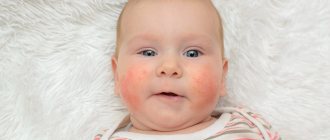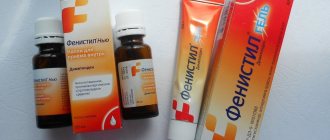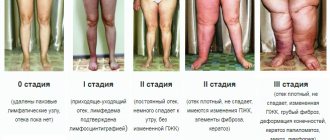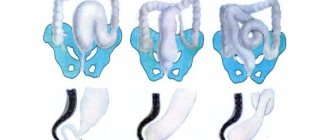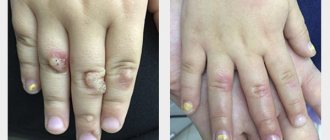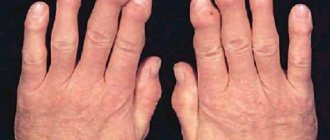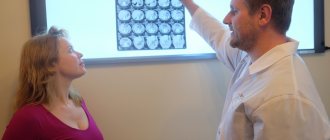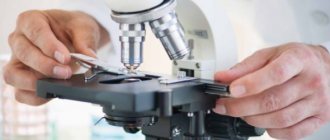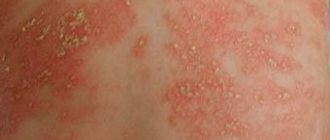Author:
Voronina Vera Removna dermatologist
Quick transition Treatment of atopic dermatitis
Mild forms can be observed by a general practitioner (pediatrician, therapist). If the allergic nature of the disease is suspected or proven, consultation or observation by an allergist is necessary.
In different countries, atopic dermatitis can be called atopic eczema, eczema, neurodermatitis, neurodermatitis.
Causes of Neurodermatitis (Atopic Dermatitis)
The main cause of the disease is the increased sensitivity of the immune system to certain factors. Foods (chocolate, honey, nuts, citrus fruits, strawberries, fish, caviar), medications, plant pollen, animal hair, bird feathers, dry fish food, mold, dust, tobacco smoke and many other substances can act as provoking factors.
Usually, a hereditary predisposition is enough to cause neurodermatitis. If manifestations of the disease are detected in both parents, then the probability of its development in the baby reaches 81%. If one parent is sick, then this figure is 55%, and it is also higher if the mother has the pathology.
Sometimes, in addition to genetic predisposition, an additional “trigger” is required, which can be:
- toxicosis;
- infections or smoking during pregnancy;
- artificial feeding;
- allergic reactions to food irritants;
- unfavorable environmental or climatic conditions;
- poor nutrition;
- physical and mental stress;
- stressful situations;
- infectious and parasitic diseases;
- diseases of the digestive and endocrine system.
What is atopy
The term “atopy” refers to an abnormal reaction of the body to an allergen, which generally explains the nature of the disease.
With the development of atopy, there is an overproduction of IgE antibodies, which are responsible for the appearance of an allergic reaction. AD belongs to the same group of diseases as urticaria, hay fever and bronchial asthma. The pathology is immune-dependent, since the main factor in its development is a mutation in genes. Specifically, we are talking about the genes encoding filaggrin. This structural protein is located in the skin and is involved in the formation of the skin barrier, preventing water loss and the entry of allergens and microorganisms. For this reason, the pathology is inherited from one of the parents, most often from the mother.
Interestingly, atopic dermatitis was essentially known back in ancient times. In those days, this disease was called “idiosyncrasy.” That is, the name reflected the mechanism of development of the pathology - as an increased reaction to an allergen - but did not explain its etiology.
The term “atopy” was first used in 1922 to define the body’s increased sensitivity to external factors.
Neurodermatitis. Symptoms
There are 2 stages of neurodermatitis: acute and chronic.
During the acute stage, the skin becomes inflamed, red spots and papules, erosions, weeping areas and crusts form on it. The rash is accompanied by severe itching. If a secondary infection occurs, then pustular lesions are detected.
The chronic stage is characterized by the following symptoms of neurodermatitis:
- The lower eyelids are covered with multiple deep wrinkles (Denny-Morgan fold)
- The nail plates acquire a “polished” shine due to constant scratching of the skin;
- The skin around the eyes darkens and peels;
- The skin on the sole becomes puffy and flaky, turns red and becomes cracked;
- Temporary hair loss on the eyebrows due to scratching the skin of the eyelids (pseudo-Hertog symptom)
- In places of the most pronounced inflammation in the acute stage, the skin is thickened, skin folds are more clearly visible (skin pattern)
Etiology and pathogenesis
The main role in the pathogenesis of atopic dermatitis is played by hereditary determinism, that is, heredity. It is a number of hereditary mutations in genes that lead to disruption of the skin barrier and defects of the immune system. The patient also has hypersensitivity to allergens, an increased number of inflammatory mediators and a number of pathogenic microorganisms such as Staphylococcus aureus and Malassezia furfur.
The pathological reaction of the body, which provokes atopic dermatitis, occurs as a result of the interaction of three factors:
- skin barrier dysfunction;
- disturbances in the functioning of the immune system;
- influence of environmental factors.
In addition to the factors described, skin barrier dysfunction can be affected by:
- Reduced levels of ceramides (lipids), which protect the skin from aggressive environmental influences.
- An increase in proteolytic enzymes - substances that are responsible for the speed of cell reaction to external stimuli.
- Exposure to proteases from house dust mites or Staphylococcus aureus.
Violation of the protective barrier leads to high skin permeability to allergens and toxins. As a result of their penetration into tissues, a pathological immune response occurs. It comes from Th2 (T helper cell type 2), a special type of cell that enhances the adaptive immune response. They activate B lymphocytes that produce immunoglobulin E (IgE), which results in an allergic reaction.
During an immune response, characteristic itching and rash appear on the skin. Constant scratching stimulates the production of anti-inflammatory cytokines, which in turn cause chronic inflammation. As a result, the epidermis intensively absorbs allergens, which provokes microbial colonization of the skin.
Forms of neurodermatitis
Clinical manifestations of neurodermatitis vary depending on the age of the patient, which is clearly visible in the photo. There are 3 forms of the disease: infant, child and adult.
The infantile form occurs in children in the first one and a half years of life and is known as diathesis.
It is characterized by an acute course. The skin becomes swollen, covered with bright pink spots, blisters and crusts, and pronounced weeping is observed. Most often, the disease manifests itself on the face, but can affect the scalp, buttocks, legs, and hands. Children's
In children aged 2-12 years, papules and red spots form on the back of the hands, on the flexor surfaces and in skin folds.
The skin becomes dry, becomes cracked, and a pattern appears on it. A characteristic feature of childhood neurodermatitis is an “atopic face”: the skin becomes dull in color, darkens around the eyes, and an additional fold forms on the lower eyelid. Adult
Adults are usually diagnosed with a chronic form of neurodermatitis with rare exacerbations. The skin thickens, becomes very dry and cracks, and a pronounced pattern is visible on it. A pale pink rash covers the face and neck, back and chest, hands and feet.
What complications can there be?
If atopic dermatitis is not properly treated, the disease will develop and lead to complications. Like manifestations, the severity and severity of complications are directly related to the age of the patient. The infantile phase is characterized by complications of atopic dermatitis such as candidiasis and Kaposi's eczema herpetiformis. In childhood, staphylococcal impetigo, molluscum contagiosum and chronic papillomavirus infection are observed. Complications in the adult phase are represented by dermatophytosis and keratomycosis. [10]
Without treatment, atopic dermatitis can significantly reduce the quality of life of the patient and his family. Discomfort is primarily associated with a person’s appearance - with dermatitis, noticeable itchy spots appear on the body, which cause anxiety among others. And although atopic dermatitis cannot be contracted, people are wary of patients and do not want to come into contact with them. Patients experience a continuous desire to scratch the inflammation, so their posture and facial expression look tense and repulsive. Therefore, when it comes to dermatitis, one cannot fail to mention the neurotic and psychological syndromes that this disease entails.
Treatment of neurodermatitis
Treatment of neurodermatitis should be comprehensive. Only in this case will it be possible to get a positive result.
To cope with the disease, you need to:
- stop the patient's contact with the substance that provokes the allergy;
- carry out desensitization - reduce sensitivity to the allergen;
- suppress the inflammatory process in the skin;
- relieve unpleasant symptoms;
- prevent exacerbations;
- cure concomitant diseases;
- cleanse the body of toxins;
Treatment should be carried out at any stage of neurodermatitis (acute and chronic). If there are concomitant chronic diseases, the dermatologist recommends that the patient consult with other specialists (generalist, pediatrician, allergist, endocrinologist, gastroenterologist, otolaryngologist, pulmonologist).
Treatment of neurodermatitis depends on the symptoms and cause of the disease, the age of the patient and the severity of clinical manifestations. It consists of taking medications, conducting physiotherapeutic procedures, and psychotherapy.
Diagnosis of skin pathology
At the moment, there is no specific laboratory test that can detect atopic dermatitis. The diagnosis is made based on the symptoms present and an assessment of the severity of the disease. The severity of atopic dermatitis is determined using the SCORAD scale, which includes a number of objective and subjective criteria. The first includes the strength and prevalence of lesions, the subjective - the intensity of itching during the day and night. [9]
To establish atopic dermatitis, it is necessary to identify specific IgE antibodies to allergens. For this purpose, cutaneous patch tests are performed, but only if the patient has delayed-type hypersensitivity.
Atopic dermatitis is often confused with other diseases. To avoid mistakes, differential diagnosis is carried out using laboratory tests:
- detection of platelet pathology;
- determination of immune status;
- microscopy of scales. [9]
Sometimes, to distinguish atopic dermatitis from other pathologies, the localization of the rash is sufficient. So vulgar psoriasis affects the extensor surfaces, while the manifestations of atopic dermatitis are localized in the flexor areas.
Drug treatment includes taking:
- antihistamines;
- immunosuppressive drugs for severe disease;
- enterosorbents
- medications that improve digestive processes in the presence of gastrointestinal pathology;
- vitamin complexes (vitamins A and D are most often used);
- sedatives.
Drug therapy (antihistamines and immunosuppressive drugs) is usually prescribed for a short period to quickly relieve the inflammatory process, relieve itching and stop the appearance of new rashes.
Quite often the disease is complicated by pathological changes in the gastrointestinal tract. Enterosorbents, probiotics, prebiotics, enzymes, bacteriophages and hepaprotectors will help remove metabolic products, destroy pathogenic microflora and normalize digestion.
Vitamin deficiency is often detected in people suffering from neurodermatitis. Vitamins and minerals can be washed out of the body or poorly absorbed due to disruptions in the functioning of the digestive system. Vitamin and mineral complexes will help correct the situation, as well as activate metabolism and speed up regeneration.
Neurodermatitis causes not only physical, but also psychological discomfort. A person feels unattractive, tries to avoid society, his self-esteem decreases, and an inferiority complex develops. Particularly sensitive people may experience psychosis and neuroses, which requires the help of a psychotherapist. The specialist will teach you how to relax and control the situation, and will correct your psychological mood, which will facilitate a quick recovery. For depression, excessive irritability, insomnia, and fear, he will select sedatives, sleeping pills, antidepressants, and tranquilizers.
The most widely used external preparations in the treatment of neurodermatitis are hormonal and non-hormonal agents.
When choosing hormonal ointments, the doctor takes into account the patient’s age, the severity of the disease and the location of the rash. For children, as well as in cases where the rashes are located on the face, weak-acting products are recommended. Stronger medications will be needed for severe disease and severe thickening of the skin.
Glucocorticosteroid drugs have a powerful effect, quickly relieve inflammation and itching, but they can cause side effects with long-term use. Therefore, they can usually be used for no more than 2-3 weeks.
For long-term maintenance therapy, doctors prefer non-hormonal agents, among which are drugs from the Losterin line (cream, shampoo, shower gel, zinc-naphthalan paste, foot cream, hand cream soap). They contain a balanced combination of active substances that provide maximum therapeutic effect and are intended for daily skin care for neurodermatitis and other dermatological diseases. They do not contain hormones or dyes. They are not addictive and do not cause side effects. Products from the Losterin line reduce inflammation and itching, eliminate weeping, have an exfoliating effect, eliminate pathogenic microflora, and restore damaged skin.
Physiotherapeutic procedures can speed up recovery and increase the effectiveness of treatment:
- plasmapheresis;
- ultraviolet irradiation;
- magnetic therapy;
- laser therapy;
- balneotherapy;
- heliotherapy;
- climatotherapy;
- thalassotherapy;
- acupuncture;
With a combination of physiotherapy and sanatorium-resort treatment, long-term remission lasting several years can be achieved.
When treating neurodermatitis, important attention should be paid to diet. It is necessary to completely exclude from the diet foods that cause exacerbation of the disease. The basis of the diet should be vegetable dishes, cereals, fermented milk products, and boiled meat.
How does the immune system normally work?
The concept of atopic dermatitis reflects the immunological mechanism of pathology development. It is based on the body’s ability to produce an excess amount of antibodies in response to incoming allergens. Antibodies combine with the allergen, which provokes a more pronounced allergic reaction than should be normal.
Let's figure out how the immune system should work normally. It’s worth starting with the fact that the system is represented by several organs (thymus, lymph nodes) and immunocompetent cells. Their main task is to protect the body from foreign elements: viruses, bacteria, fungi and allergens. This is accomplished through the development of protective reactions that are provided by certain cells. That is, the immune system recognizes foreign elements, destroys them and forms immunological memory.
Two types of cells help to perform such functions - B-lymphocytes and T-lymphocytes (killers, suppressors and helpers). Each type of cell has its own role in the operation of the system. Thus, B lymphocytes recognize foreign elements and form memory cells. T-killers are necessary to destroy foreign elements, T-helpers are involved in strengthening the immune response in response to the penetration of pathogenic agents. Suppressor T cells regulate the strength of the immune response by controlling the number of helper and killer cells.
The key to proper functioning of the immune system is a certain ratio of immunocompetent cells. With any quantitative disturbances, the immune reaction becomes pronounced, which is what happens during atopic dermatitis.
To prevent repeated exposure to the pathogen, the immune system forms a memory. It is synthesized by certain antibodies, or immunoglobulins, that form on the surface of B lymphocytes. Antibodies are proteins that have high specificity for antigens. As a result of their connection with antigens, an immune response is triggered in the body.
Several types of antibodies may be present in the body - immunoglobulins A, M, G and E. Each of them has its own function. For example, immunoglobulins A are responsible for protecting the respiratory tract. Immunoglobulins M and G are components of humoral immunity and arise as a result of the penetration of bacteria and viruses. Also, immunoglobulins G appear some time after the disease and can remain in the body for up to several years.
Immunoglobulins E arise as a response to the penetration of allergens. They are the ones who trigger an allergic reaction, which is accompanied by the release of various biological substances (for example, histamine). Under the influence of these substances, a person develops characteristic allergy symptoms: redness, itching, swelling.
Normally, the body contains very little immunoglobulin E, since these cells quickly disintegrate. However, as a result of a genetic mutation, some people have very high levels of these immunoglobulins, which increases the risk of developing atopic dermatitis on the face and body.
When it first encounters a foreign element, the immune system synthesizes certain antibodies. They help protect the body from re-infection for a certain period of time. During an allergic reaction, the process occurs differently. Upon contact with an allergen, a sufficient amount of antibodies is produced, which will subsequently bind to the allergen. Upon repeated contact, an antigen-antibody complex appears. An allergen acts as an antigen. An antibody is a protein produced by the body.
The antigen-antibody complex triggers a whole chain of immunoallergic reactions. With a large amount of immunoglobulin E, a pronounced and prolonged allergy appears. Simultaneously with the allergic reaction, a number of biologically active substances are released. It is these substances that trigger pathological processes that lead to the appearance of typical allergy symptoms. If the amount of immunoglobulins remains high, then the allergic reaction does not disappear, which indicates the development of atopy.
Diet for neurodermatitis
Food is often responsible for exacerbating neurodermatitis. Which product caused the allergic reaction is determined in the laboratory. Based on the results of the study, a specific elimination diet is prescribed, in which foods harmful to his health are limited in the patient’s diet. The most allergenic dishes are fish and fish broths, fried meat and meat broths, chocolate, citrus fruits, sweet berries, honey, nuts, caviar, mushrooms, spicy, pickled, smoked foods, as well as food colorings. If the disease worsens, you need to completely abandon dangerous foods; in the future, in consultation with your doctor, they can be gradually added to the daily diet. In addition, short-term therapeutic fasting is possible under the supervision of a doctor. The basis of the diet of a patient with neurodermatitis should be vegetables, cereals, boiled meat, and dairy products. Also, the diet can be compiled based on the presence of concomitant diseases.
The most allergenic foods
The basis of the diet of a patient with neurodermatitis
Prevention
To prolong remission after treatment, you must carefully follow your doctor's recommendations on preventive measures. Reducing the factors that lead to increased symptoms helps minimize the likelihood of relapse:
- following a hypoallergenic diet;
- maintaining humidity at least 60%;
- avoiding cold, the room temperature should not fall below 23 degrees;
- removal of all interior items for which it is impossible to apply daily wet cleaning - books, carpets, bedspreads, pillows, curtains;
- changing all wool and feather sleeping items to synthetic ones;
- a thorough inspection of the apartment for mold, removing it (often in the bathroom);
- avoiding the use of powders and strong-smelling products in the home;
- change of clothes to cotton ones;
- exclusion of living in the same apartment with pets;
- use of specialized hygiene products that do not contain dyes and are soft;
- applying moisturizers after showering.
Means to improve the functioning of the digestive system
Since the course of the pathology is often complicated by concomitant diseases of the digestive system, treatment of neurodermatitis is combined with therapy aimed at normalizing the functioning of the stomach and, mainly, the intestines. It has been proven that with the normalization of digestive processes, treatment of neurodermatitis occurs faster, since the level of toxicoderma in the body decreases and tissue regeneration processes are accelerated.
To regulate the functioning of the digestive organs, drugs with multidirectional effects are used:
- Enterosorbents are used to remove metabolic products and remove harmful microflora. However, taking them can lead to the leaching of vitamins and microelements, so it is necessary to artificially compensate for their deficiency. A course of taking enterosorbents is carried out before a course of taking drugs to regulate intestinal function. For neurodermatitis, activated carbon and preparations with the following active ingredients are most often used: attapulgite, diosmectite, polymethylsiloxane polyhydrate, hydrolytic lignin, povidone;
- preparations for normalizing intestinal microflora , which contain prebiotics (inulin, lactitol, lactulose, lysozyme), probiotics (bifidumbaterin, bactisubtil, linex, probifor), synbiotics (laminolact, normoflorin, maltodophyllus), enzymes (pancreatin), hepatoprotectors (phospholipids, beatin, glycyrrhizic acid, ademetionine), bacteriophages (pseudomonas, staphylococcal, coliproteus).
Skin application with SAFT nutrition test
SAFT is a food allergy testing method primarily used for young children. The technique involves eating the food that is suspected of causing the child's allergy and monitoring symptoms.
If erythema, itching and swelling of the skin occurs during use, this indicates a positive result, that is, an allergy. Most often, this test is carried out on allergenic fruits, vegetables, milk, chicken eggs and nuts.
Psychotherapy for neurodermatitis
Neurodermatitis is not only a physical, but also a psychological disease that can lead to negative consequences for the patient’s daily life, for example, secondary psychoses and neuroses. The psyche is affected by both constant physical discomfort, itching, pain, and inappropriate attention or even condemnation from society. In addition to the main treatment, the patient requires the help of a psychotherapist, psychologist or psychoneurologist (depending on the severity of the disease), who will teach the patient self-control, relaxation methods, and also, if necessary, prescribe medications:
- sedative herbal medicines;
- drugs against insomnia;
- mild tranquilizers and antidepressants.
To prescribe psychotropic drugs, good reasons are needed, such as fear, insomnia, increased irritability, depression. The drugs are prescribed in small or medium doses for a certain period of time.
Forecast
In approximately 70% of patients whose atopic dermatitis began at an early age, the symptoms completely disappear over time, while in the rest they recur under the influence of external circumstances. The prognosis of the disease is favorable, but its presence can lead to social maladjustment. With timely, high-quality treatment, to which the patient shows great responsibility, it leads to stable remission.
Since atopic dermatitis has a general allergic tendency, it is possible to develop other allergic diseases in the future, usually associated with the respiratory system (allergic rhinitis, bronchial asthma, etc.).
Determination of total concentration of IgE antibodies
The simplest test performed to diagnose AD is to determine the total concentration of IgE antibodies in the blood. This concentration is indicated in IU, and the standard is 100 IU/ml. In patients with atopy, the total concentration of IgE antibodies increases by 80%. There is often a relationship between IgE concentrations 10 times normal and the clinical condition of the patient's skin. The higher the antibody concentration, the worse and more severe the skin changes.
Therefore, patients with atopic dermatitis can be divided into two groups: those with elevated antibody levels and those with normal antibody levels (about 20% of patients).
- In the first case, we talk about extrinsic atopic dermatitis (extrinsic atopic dermatitis - EAD) because the symptoms are caused by allergens coming from the environment.
- Less commonly, we deal with intrinsic AD (intrinsic atopic dermatitis - IAD), where symptoms arise from non-immune causes, such as a skin defect or a nonspecific inflammatory response. This means that an IgE result within the normal range does not necessarily rule out atopic dermatitis.
